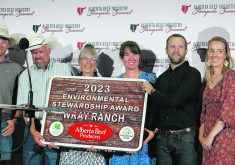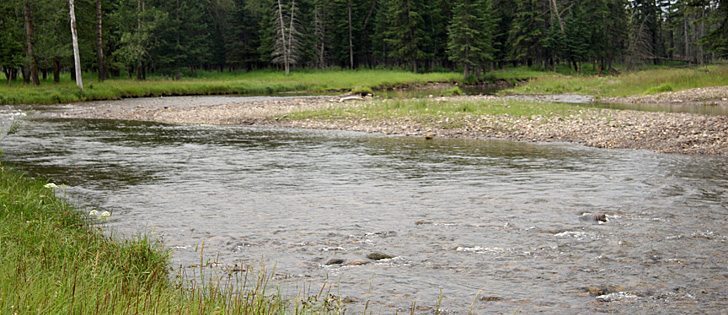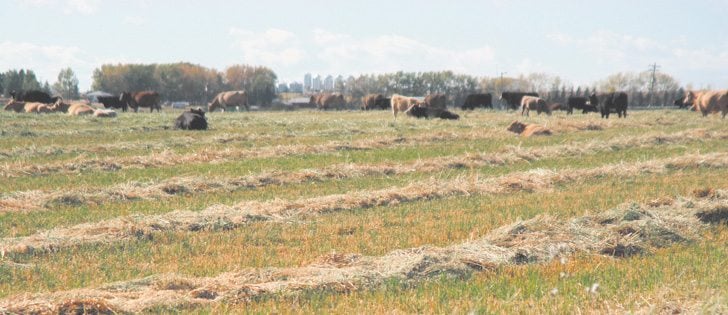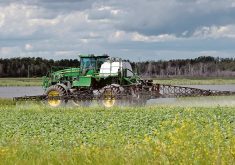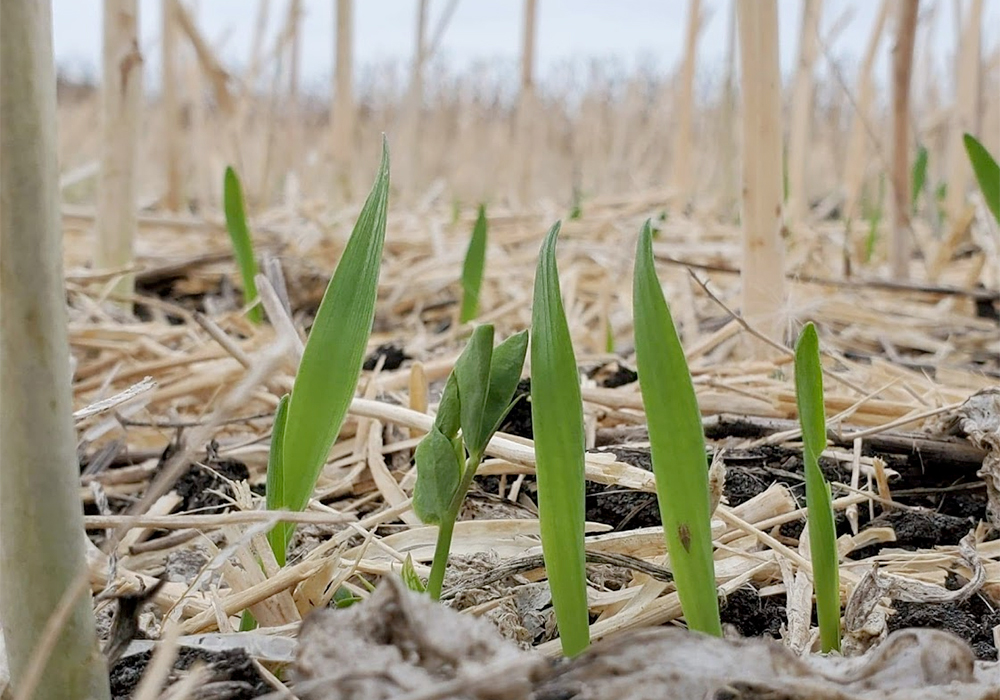Pastures overgrazed | After 10 years of ‘crisis management,’ legume, grasses and wildlife have returned
TOMAHAWK, Alta. — The simple combination of grass, water and rest was key in turning severely overgrazed pastures into an award-winning ranch.
The pastures were bare and overgrazed when the Taillieu family took over management of the Tomahawk Cattle Ranch in 2001.
Eleven years later, the family has revitalized the ranch without fertilizer, plows or machinery and was awarded Alberta Beef Producers’ Environmental Stewardship Award for the dramatic improvement and care of the 14,000-acre ranch west of Edmonton.
The family believes that grass is simple, requiring only grazing, water and rest.
Read Also
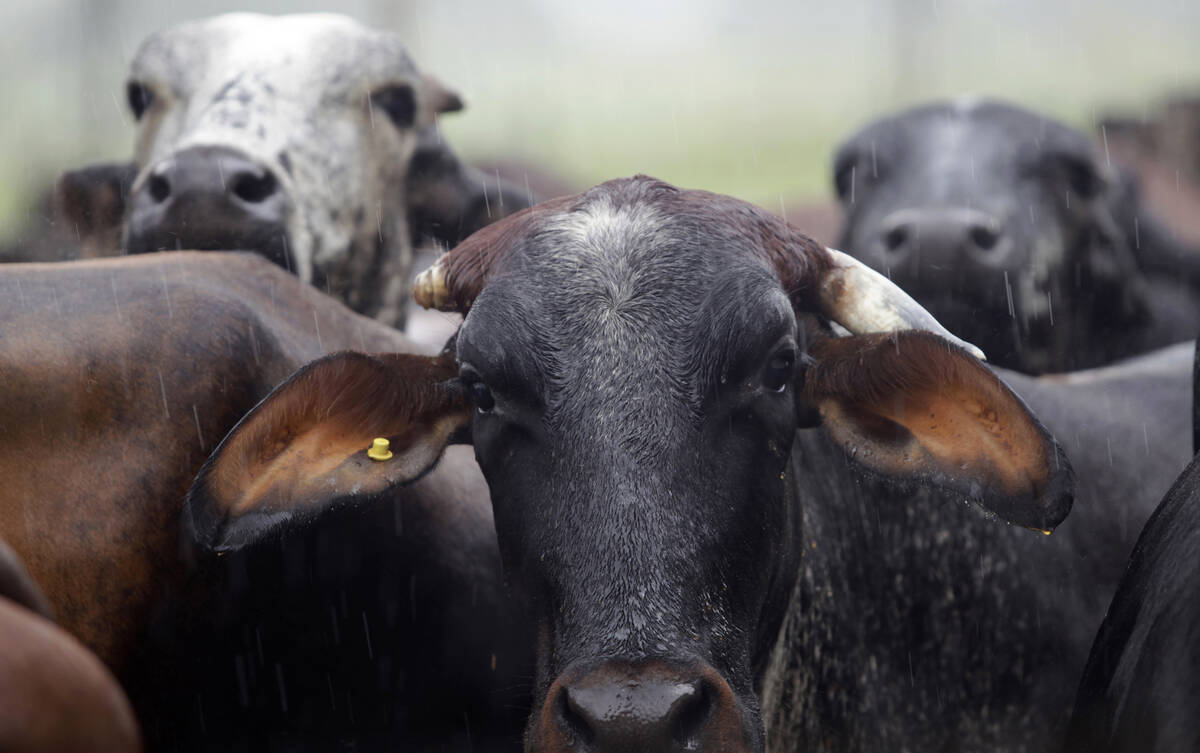
Global meat packer prepares for cattle shortage
Brazilian meat packer JBS is preparing for a likely shift in the country’s cattle cycle that could lead to reduced availability of animals for slaughter next year.
“The most important is the rest period,” said Gerry Taillieu, who with his wife, Cheryl, son, Grant, daughter-in-law, Hali, and daughter, Amy, has turned the ranch into a healthy and financially successful operation.
He said the ranch was “in a very sad state” when the family took over managing it in 2001.
The pastures were overgrazed, water sources were limited, fences and buildings were in disrepair and the cattle herd was a mishmash of breeds.
“Financially, the ranch was going the wrong way in a hurry,” Taillieu said of the ranch once owned by Alberta financier Donald Cormier, and now owned by a group of investors.
When the new ranch owners hired Gerry, his mandate was to turn the ranch around and not ask for any money. Changing the ranch into a thriving operation wasn’t easy during the 2002 drought, BSE and continuing low beef prices.
“The first few years were crisis management.”
In the beginning, the family concentrated on the basics of improving the grass and water. Season long grazing by the ranch’s cow herd and six patron herds had created overgrazed pastures with no legumes.
The family built dugouts and rotated the cattle through the pastures and now has grazing for the ranch’s 500 cows and 350 yearlings, which graze almost year round. There is also enough grass for the 1,200 cow-calf pairs and 330 yearlings brought in by patrons.
“The biggest thing is short grazing and a long rest period,” said Grant.
That combination, without the use of fertilizer or seed, has returned legume and grass species to the fields.
Grant estimates there are now six to eight varieties of legumes and six to 10 varieties of grass in the ranch’s more than 100 pastures.
“The seed had been in the soil. It just waited for the soil to get healthy enough to grow,” said Grant.
Cheryl said the improved grasslands have helped return wildlife to the ranch.
“Now we have a variety of animals and birds.”
The family has also used bale grazing to improve the productivity of poor quality pasture.
Grant said 70 to 80 percent of the high ground was bare when they took over the ranch. Now only 10 to 15 percent of the high ground is bare, which has been accomplished by placing bales on the bare ground. The family tries to move bale locations annually to spread the manure on the fields as evenly as possible.
Low Water Lake is one of the ranch’s unique features.
The 5,000-acre lake was drained in the 1960s and has created challenges and benefits. The lake bottom was either grazed or hayed when the Taillieus arrived, depending on the water level.
However, the soft bottom created problems for grazing cattle and it was difficult in some years to get custom haying equipment on the land.
The family now grazes the lake mostly from December to March to eliminate these problems.
“We know they can graze through snow. Some pastures, we struggled to maintain fences and good water,” said Gerry.
Careful culling and a breeding program led to the evolution of an Angus-based herd with the ability to graze through snow. The size of the cattle has dropped from 1,650 pounds to 1,250 lb. and the weight of the calves at weaning has increased by 125 to 150 lb.
“They have evolved into deep bodied cattle with lots of capacity,” said Grant.
Grazing cattle on the snow requires careful management. They are immediately fed hay if the weather changes and the snow turns hard and crusty.
“It’s hard to graze cows through winter,” Gerry said.
“It takes more work than feeding bales. The easiest thing to do is feed cows hay and be done.”
He said it’s not uncommon for cattle to graze through a metre of snow.
The cattle were fed bales for 30 days last year, but some years they are fed hay for only two weeks. Pellets are fed to the calves and mature cows to help ensure their nutritional needs.
The family estimates it costs 31 to 32 cents per head per day to feed the cattle, plus eight cents yardage costs.
The family helped reduce their workload by pushing back calving to the beginning of June. The amount of effort expended on calving is now minimal, said Gerry.
“We don’t get up in the middle of the night to check heifers.… Our herd gets left most on its own.”
The family says the changes they have implemented have created a profitable ranch that has translated into a healthier environment for the livestock, wildlife and water.



